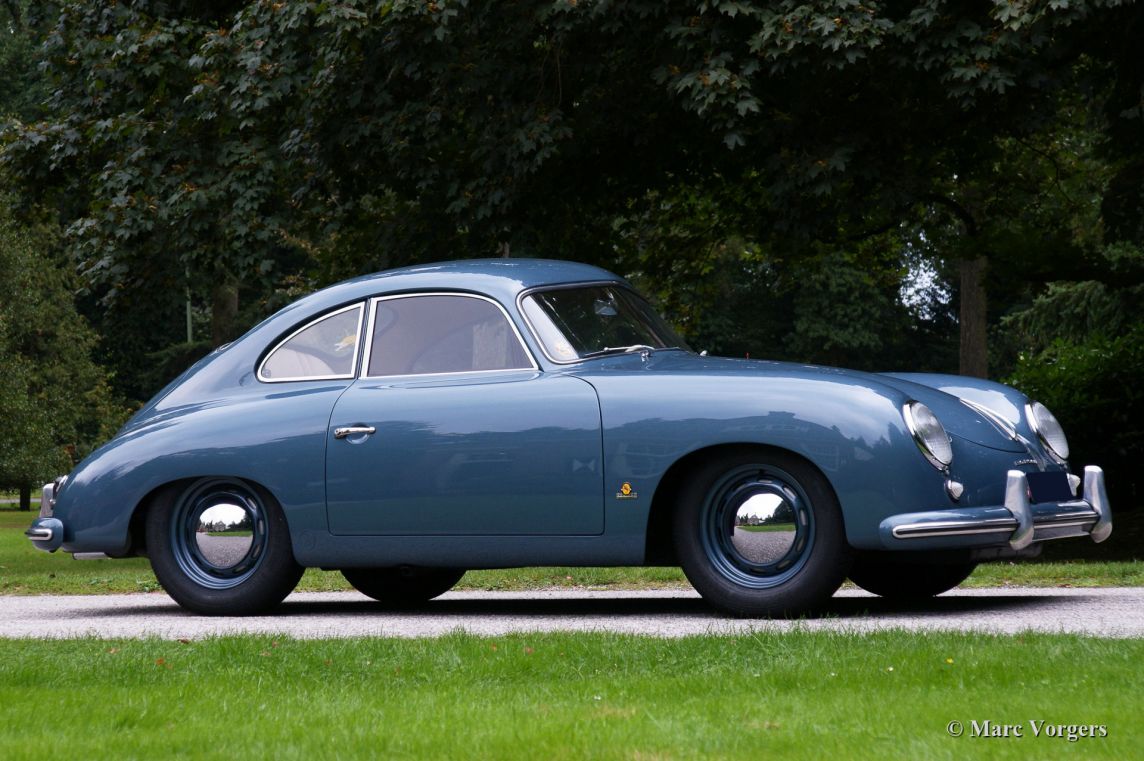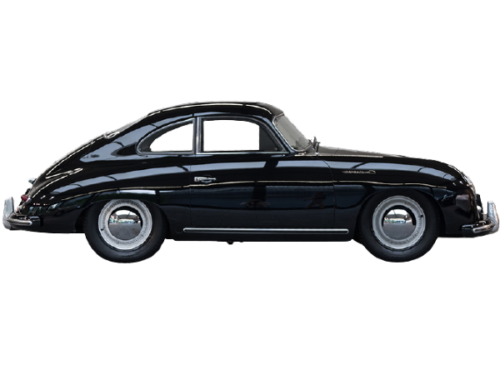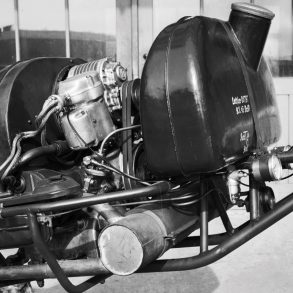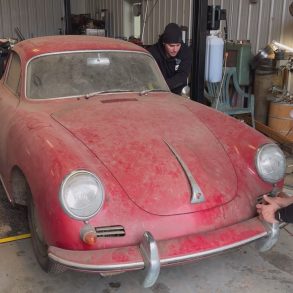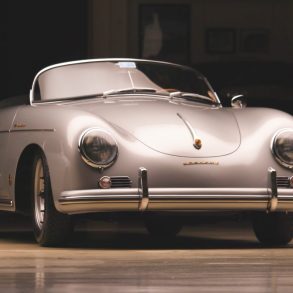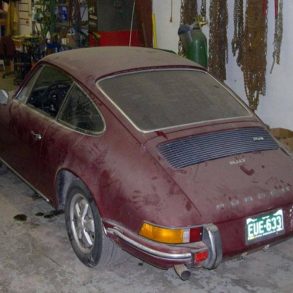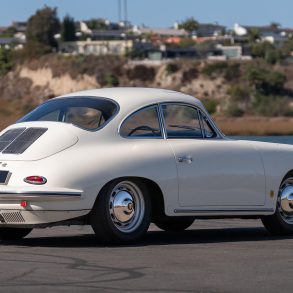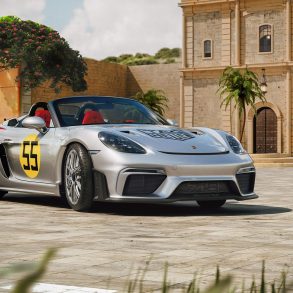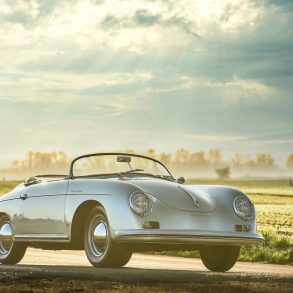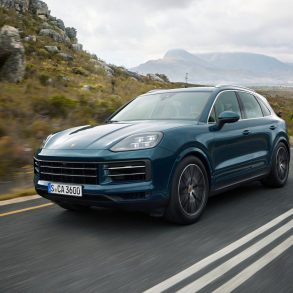1953 – 1955 Porsche 356/1500 Super “Pre-A” – The Ultimate Guide
Towards the end of 1951 Porsche introduced a larger version of the flat four engine. By increasing the bore to 80mm, the displacement grew in size to 1286cc and with it the power rose to 45 bhp. It was offered alongside the original 1.1 litre engine, which remained in production until 1954. It took a lot more effort to develop the third variation on the four cylinder theme; the ‘1500.’ With the help of crankshaft manufacturer Hirth, the Porsche engineers managed to increase the stroke sufficiently to get to the desired displacement of 1.5 litre. Introduced in the 356 1500 during 1952, the engine produced 55 bhp. Porsche’s competition department reworked the 1500 engine with hotter cams and bigger Carburetors, boosting power to 70 bhp. In October of 1952 this engine found its way into a new road car; the 356 Super.
The larger engines made the 356 a much more appealing prospect in the United States. Helped by the great sales tactics of Hoffman, Porsche got an ever grower following in North America. They were extremely popular with amateur racing drivers, who campaigned them with great success. Hoffman had nevertheless not yet given up on the idea of a ‘spartan’ 356 in the vain of the America Roadster to compete with the British sports cars and also the new Corvette on price. Porsche’s answer to Hoffman’s requests was the standard Cabriolet based ‘Speedster’, which featured a very minimalistic interior, a cut-down curved windshield and no folding roof. Cheaper and lighter than the standard Porsches, the Speedster was an immediate hit in the salesroom and also on the racing track.
Even though the 356 and its engines had been constantly updated to meet the latest demands, Porsche felt it was time to completely revamp the model in 1955. Although visually very similar, the ‘356A’ launched at the Frankfurt show in the fall of 1955 was a big step forward. It meant the end of the line of the first Porsche production model that saw the company transform from a modest engineering consultant to a full fledged manufacturer. By the time the 356A took over, nearly 8000 examples of the 356 were produced; quite a few more than the 100 per year of the original prediction.
Most people don’t realize that the “Pre-A” designation was added later in Porsche history to distinguish the new cars introduced in October 1955 from earlier 356 coupes and cabriolets and the very first Speedster models built in 1954. The Pre-A cars have unique styling traits, which differed noticeably from the 356A versions. One of the more distinguishing characteristics was the rear fender treatment, which had a wider, more graceful wheel arch, covering more of the tire.
Other production changes that occurred during Pre-A production, particularly in 1952, included redesigning the bumpers, which were originally integrated into the body until October 1952 (1953 models) after which bumpers were separate pieces mounted through the body. The first use of separate bumpers was on the America Roadster. Other running changes included replacing the original split windshield with curved, one-piece glass beginning in March 1952, and dropping the temperamental 4-speed crash box for a new synchromesh transmission in 1953.
The 1952 models were also among the first to come equipped with the more powerful 1500 motor (beginning in March 1952), upping displacement from 1.3 to 1.5 liters (91 cubic inches). The smaller VW-based 1100cc engines also remained available through the 1954 model year. The engines in the first production cars had been modified VW motors fitted with new aluminum cylinder heads. Porsche increased the flat four’s swept volume to 1488cc by lengthening the stroke 10mm and using a new die-forged Hirth crankshaft.
Bore x stroke were now 80 x 74mm, however, at 1.5 liters the VW engine had been taken as far as its design would permit. Porsche would have to begin building their own engines if they wanted to go beyond the 1.5 liter’s capacity. Chief engineer, Dr. Ernst Fuhrmann, had already begun to tackle this problem in 1950 under the product designation Carrera, the Spanish word for race, which by the end of the decade was to become synonymous with the Porsche name.
The 1500 Super was officially announced in October 1951. Displacement was 1488cc and the engine got unique flat top pistons. Power was 60bhp at 5000rpm and torque was 75 ft lbs at 3000rpm.
In April 1952, Porsche switched to a single-piece windscreen, the interior got an update and wider, lighter wheels were added. In June 1952, the 356’s bumpers were moved further away from the body and fitted with black rubber inserts.
Cosmetic changes for the 1953 model year were made and only modest changes were made in October 1953 (for the 1954 model year). A 1.3-litre roller-bearing engine was also released with 60bhp at 5500rpm and 65 ft lbs at 3600rpm. More changes were on the way in April 1954, mainly cosmetic and option related. The Type 546 in the plain-bearing engined 1500 became the 546/2.


